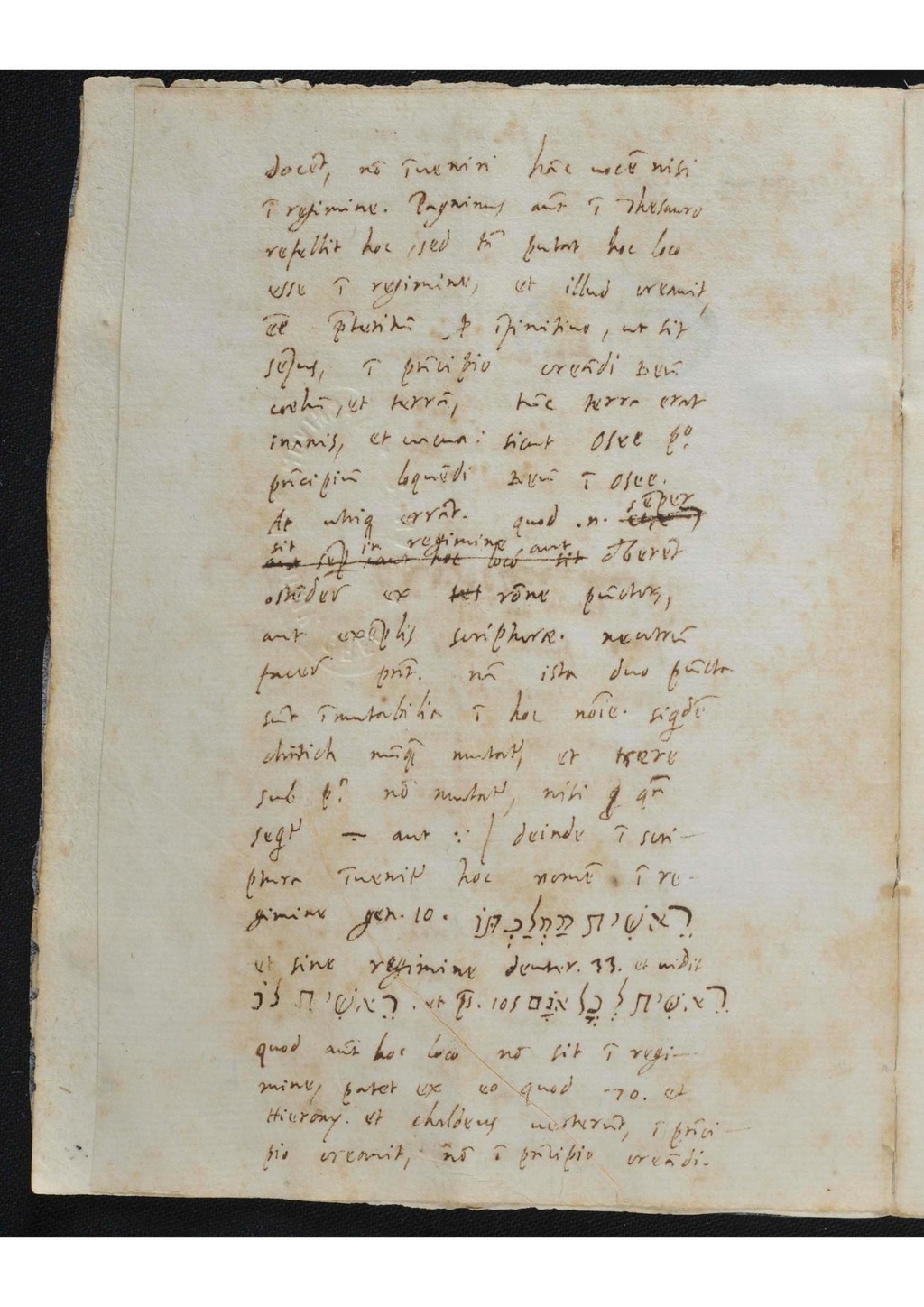docent, non inveniri hanc vocem nisi
in regimine. Pagninus autem in thesauro
refellit hoc, sed tamen putat hoc loco
esse in regimine, et illud creavit,
esse praeteritum pro infinitivo, ut sit
sensus, in principio creandi Deum
caelum, et terram[1], tunc terra erat
inanis, et vacua: sicut Osee p°
principium loquendi Deum in Osee[2].
At utrique errant, quod enim ? semper
aut semper aut hoc loco sit sit in regimine aut deberent
ostendere ex tes ratione punctorum,
aut exemplis scripturae. neutrum
facere possunt. nam ista duo puncta
sunt immutabilia in hoc nomine. siquidem
chirich numquam mutatur et tzere
sub p° non mutatur, nisi q quando
sequitur ָ aut ֶ [3]/ deinde in scri
ptura invenitur hoc nomen in re
gimine gen 10[4] רֵאשִׁ֤ית מַמְלַכְתּוֹ֙
et sine regimine deuter 33[5] et vidit
רֵאשִׁ֤ית לֹו et psalm 105[6] רֵאשִׁ֤ית לְכָל־אוֹנָֽם
quod autem hoc loco non sit in regi
mine, patet ex eo quod 70[7] et
Hieronymus[8] et chaldeus[9] verterunt in princi
pio creavit, non in principio creandi.
- ↑ 'secundum opinionem meam est connectum, i. in regimine genetivi sicut Jer. 26,1', אוֹצַר לְשׁוֹן הַקֹּדֶשׁ hoc est Thesaurus linguae sanctae (Lyon, 1529), p. ??. However, in his latin rendering of the Bible strictly according the Hebrew text Pagnini translates instead of 'In principio creandi' 'In principio creavit Deus', see Biblia sacra ex Santis Pagnini tralatione, sed ad hebraicae linguae amussim novissime ita recognita (Lyon, 1542), 1r. Santes Pagnini's 'Thesaurus Linguae Sanctae' is based on 'Sefer ha-Shorashim' (Book of Roots) by the Jewish medieval biblical commentator and grammarian David Kimhi.
- ↑ Osee 1,2
- ↑ Institutiones linguae hebraicae, p. 56.
- ↑ Gen. 10,10
- ↑ Deut. 33,21
- ↑ Ps. 105,36
- ↑ Septuagint
- ↑ The Vulgata- latin rendering of the Bible, as printed in the Biblia regia, a polyglot version of the Bible in 5 languages printed in Antwerp between 1569 and 1572 by Christopher Plantin. The Biblia regia is used by Bellarmine for comparing the hebrew, aramaic, greek and latin renderings of Scripture
- ↑ The targum i.e. the aramaic translation of the hebrew text.
